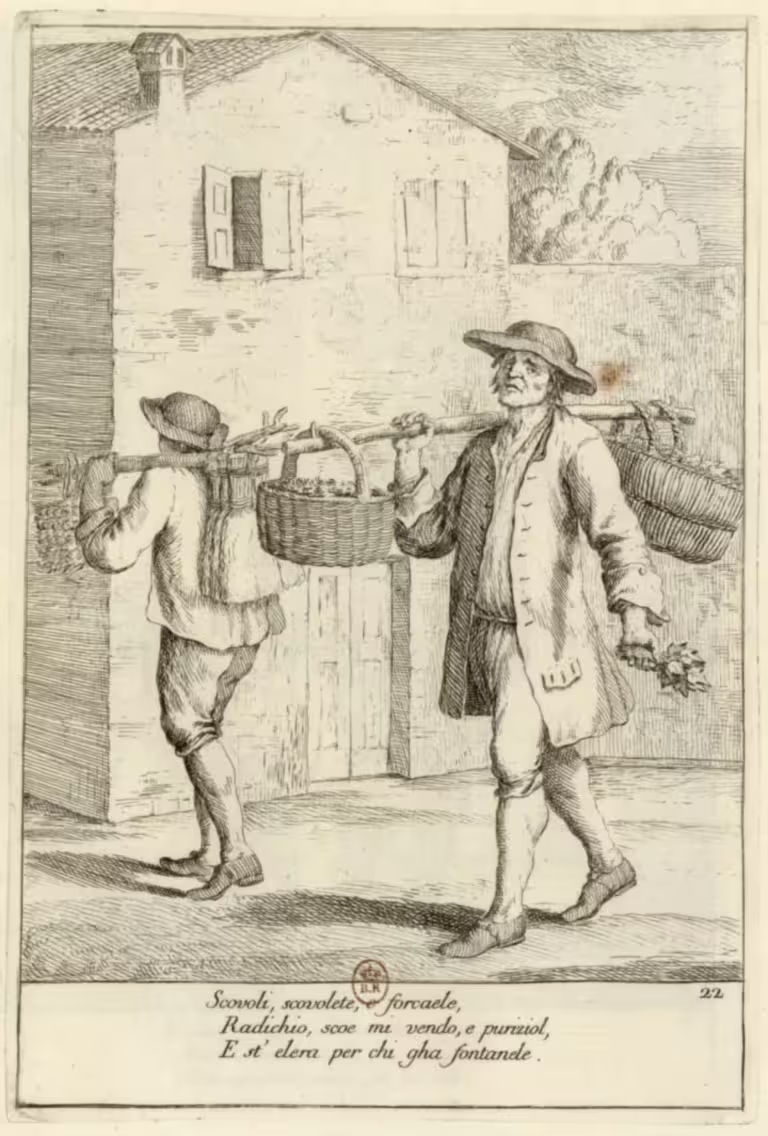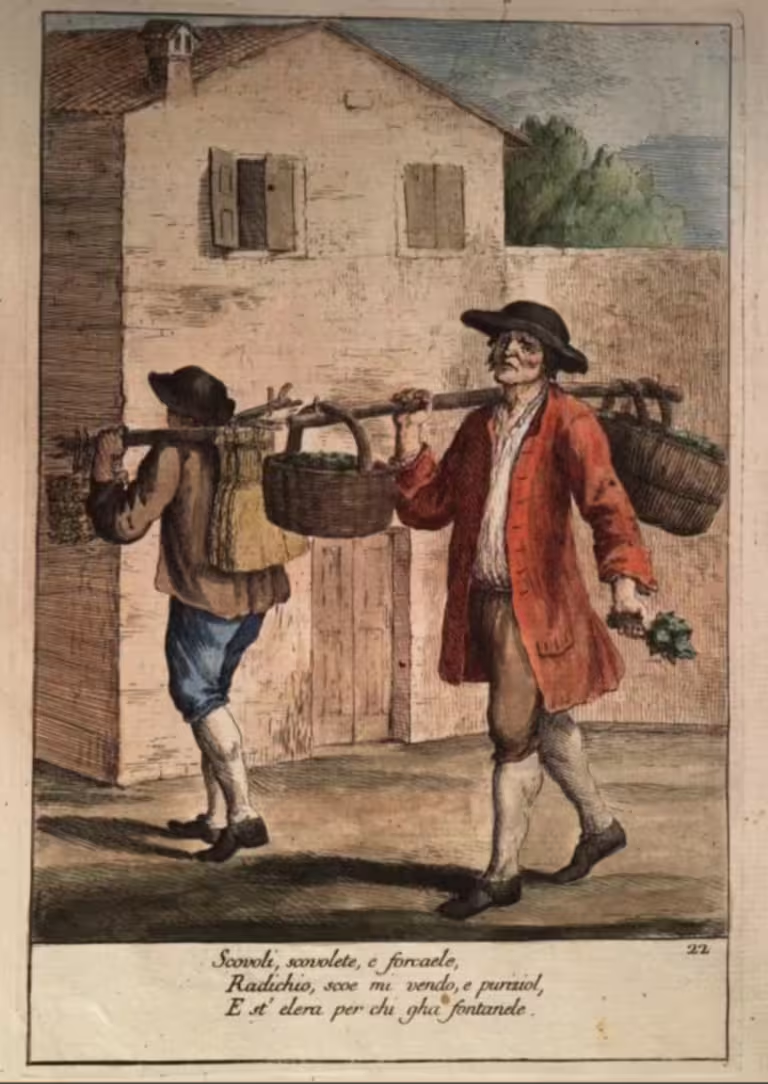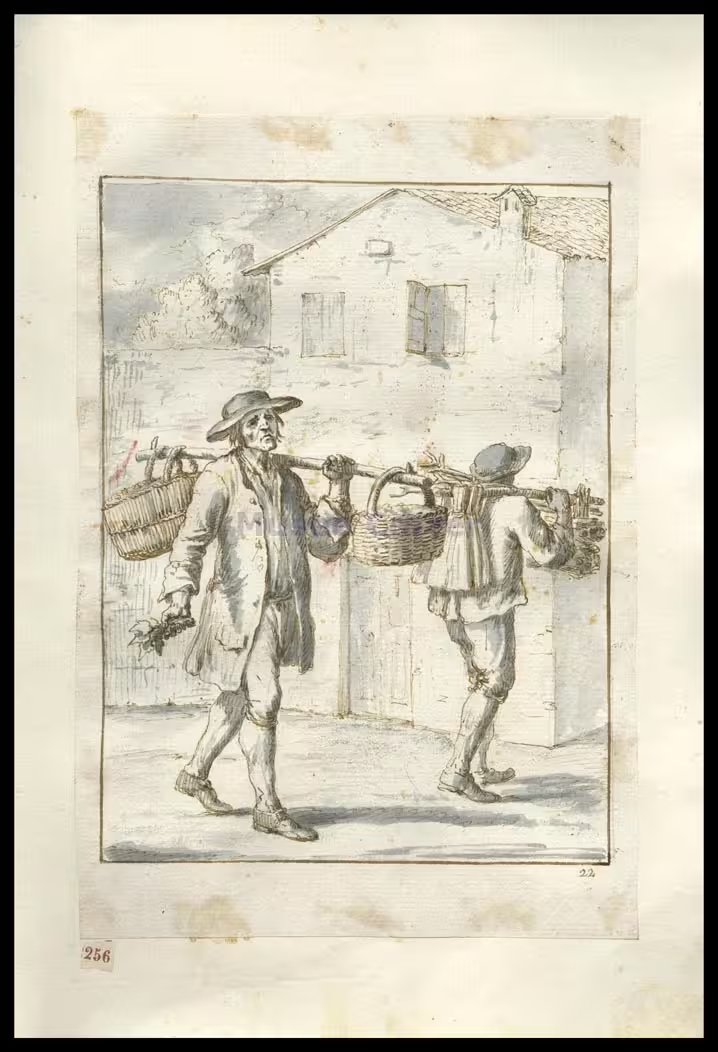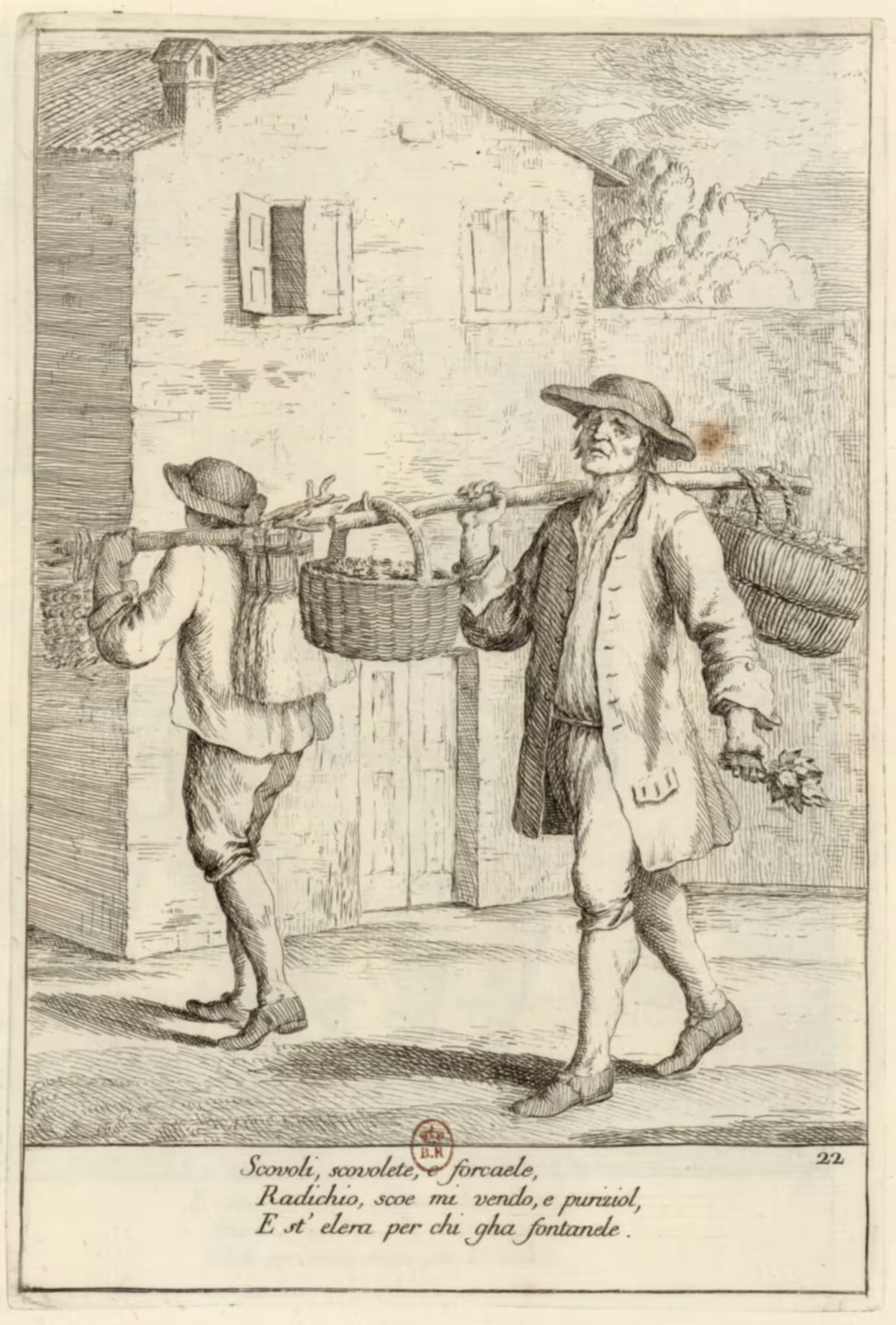Forcae, Elera ec. — plate 22
The Arti che vanno per via nella città di Venezia (1753, 1770, 1785, etc.), by Gaetano Zompini (1700–1778), contains sixty engravings of common, mostly poor people, peddling their trades on the streets of Venice in the mid-1700s.


Text
Scovoli, scovolete, e forcaele, Radichio, scoe mi vendo, e puriziol, E st’elera per chi gha fontanele.
Translation
Handbrooms, brushes, and pitchforks,
Radichio, brooms I sell, and parsley,
And this ivy for those with fountains.
Notes
This is one of the more intriguing plates.
The words scovolo, scovoleta and scoa (scopa) are straightforward. They are various kinds and sizes of brushes and brooms.
I haven’t found the word forcaela in the dictionaries, but it is probably some kind of small pitchfork.
It is also not clear how radichio fits in here. One possibility is that the plants were used for light cleaning, like dusting, but it is pure guesswork.
The word puriziol also eludes me, but elsewhere I’ve seen it translated as parsley. The dictionaries I have, Boerio (1829) in particular, have other Venetian words for parsley.
The word elera means ivy, but I have no idea why people with fountains would want to buy ivy.
All images







Leave a Reply